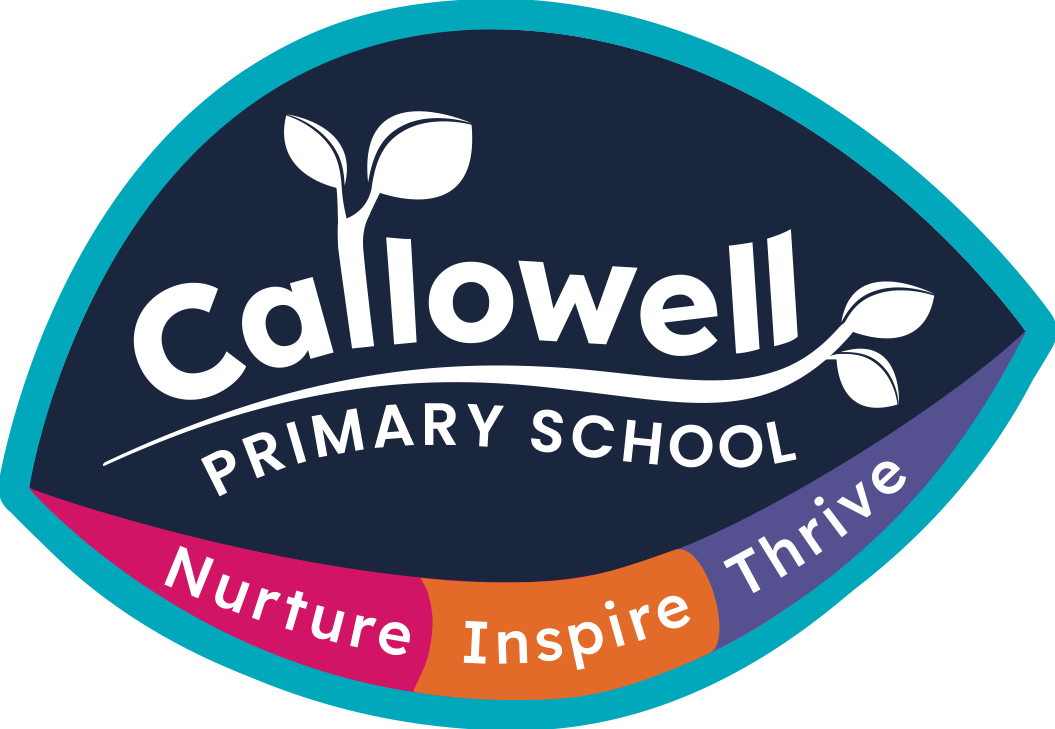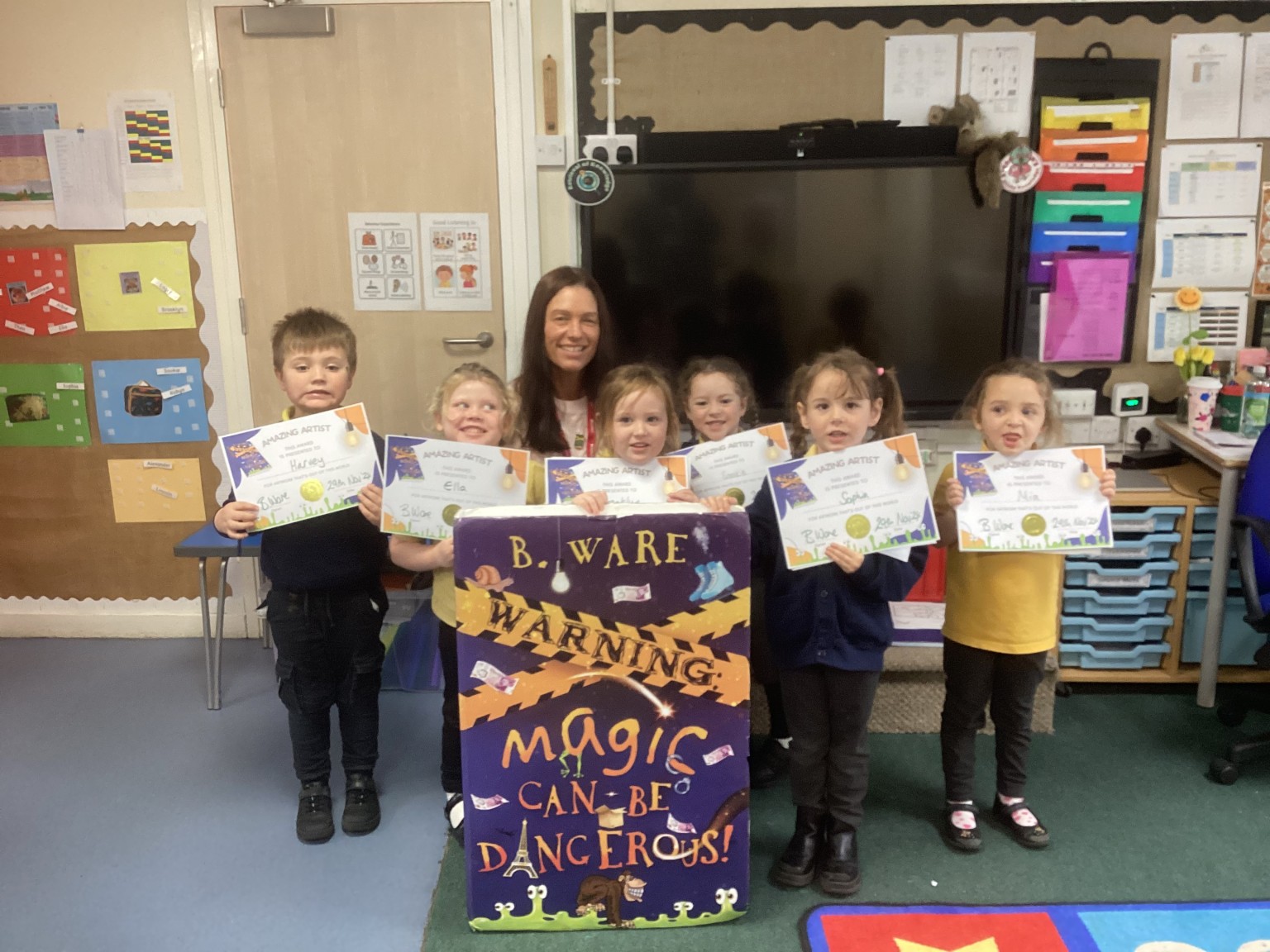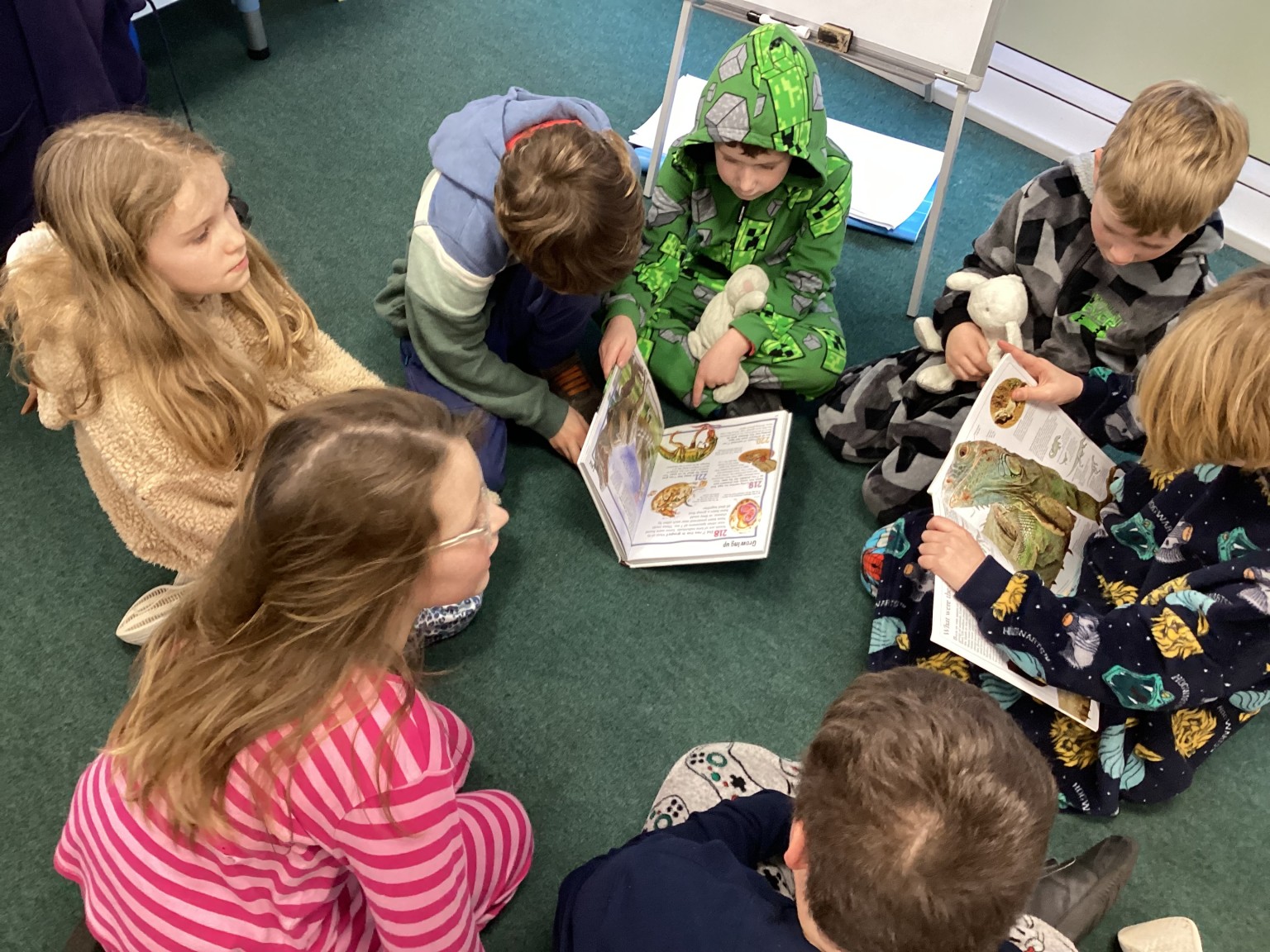Intent
At Callowell Primary School, we believe it is crucial for children to develop a life-long love of reading and have a passion for reading for the rest of their lives. We believe that this passion begins with us, and we recognise the importance of modelling this within the school community. At the heart of our strategy, we have a drive to provide children with a literacy-rich environment, high quality and exciting texts that promote an array of vocabulary, contexts and plots beyond their own reading. We allow children to respond to a wide range of texts and to reflect on how they feel. We provide children with the necessary skills to become a reader and promote reading for pleasure. We know the importance of supporting children to decode phonetically, with increasing accuracy and speed. Therefore, we have daily phonics lessons and targeted reading lessons, to teach our children to develop prosody and to show a clear understanding of the text, extracting information from both fiction and non-fiction text types.
Implementation
Reading is a crucial part of all of our lessons across the curriculum; we ensure children are involved in a wide variety of reading activities every day.
Reading for pleasure at Callowell
Each class in the school has a book corner, where children can select books to read for pleasure.
Children have regular visits from authors.
Children have a reading assembly weekly.
Children select their own books to take home.
Children in KS1 have a 'reading for pleasure book' alongside a phonetically decodable book.
Each week, a reading certificate is awarded to a child from each class to celebrate fluency, progress and/or enthusiasm in reading.
Phonics
We teach a systematic synthetic phonics programme. We start teaching phonics in Nursery/Reception and follow the Little Wandle Letters and Sounds Revised Programme.
Those in Year 2 who have not passed phonics screening in Year 1 will have additional, focused intervention at an increased pace.
Daily intervention is planned for those who are working below expected levels as soon as needs are identified.
The school ensures all texts are accurately matched to pupil ability, ensuring 90%+ fluency.
We model the application of the alphabetic code across the curriculum and encourage children to use their phonetical understanding when they come across words that they are unsure of.
We have a strong focus on language development and oracy skills for our children at Callowell as we know speaking and listening are crucial skills across the curriculum.
Children are closely monitored in Key Stage 2 and take part in Little Wandle’s Rapid Catch-Up Phonics programme. This is adjusted depending on the needs of the individual child.
Any new children undergo a phonics assessment to assess their starting points.
Foundations for Phonics in Nursery:
Love of reading
From the beginning of Nursery, children have multiple opportunities every day to experience lots of high-quality texts. Children have planned opportunities to connect with books through nursery rhymes, actions, songs and poems that link to the text.
Tuning into sounds
From Autumn 2 in Nursery, we teach phonemic awareness and hearing the initial sounds. As children become more confident with hearing the initial sounds, children are encouraged to join in with blending aloud.
Daily phonics lessons in Reception, Year 1 and Year 2
In Reception and KS1, we teach phonics daily.
Children make a strong start in Reception: teaching phonics begins in the first full week of the Autumn term.
Children in Reception are taught to read and spell words using Phase 2 and 3 GPCs, and words with adjacent consonants (Phase 4) with fluency and accuracy.
Most children in Year 1 review Phase 3 and 4 and are taught to read and spell words using Phase 5 GPCs with fluency and accuracy; timetabling adjustments are made rapidly if children are falling behind.
Most children in Year 2 complete a Phase 5 review in Autumn 1, before moving on to the Bridge to Spelling programme. Upon completion of this, Year 2 children begin the Little Wandle Spelling programme.
Throughout the programme, children are regularly assessed and any gaps in knowledge are quickly identified. Some children will be put onto individual or group Keep-Up plans.
Daily Keep-Up lessons ensure every child learns to read:
Any child who needs additional practice has daily ‘Keep-Up’ support, taught by a fully trained adult. Keep-up lessons match the structure of class teaching, and use the same procedures, resources and mantras, but in smaller steps with more repetition, so that every child secures their learning.
Rapid Catch Up:
If any child in Year 3 to 6 has gaps in their phonic knowledge when reading or writing, we plan phonics ‘catch-up’ lessons to address specific reading/writing gaps.
Any child who is identified as behind their peers in reading are read with daily.
EYFS and KS1 group reading
At Callowell, we want all of our children to be fluent readers and writers. This is why we follow the Little Wandle Letters and Sounds Revised Programme. Children read books matched to their secure Phonic knowledge and will read in groups, 3 times a week, with a trained adult. In Phonics sessions, children are encouraged to ‘blend to read’ in order to make links with phonics and reading.
Initially, the GPCs in the Phase 2 books are cumulative, and the children should be given them in order. Children should start Reading practise sessions with worded books once they are able to blend. As this happens at different times for children, some children will begin these Reading practise sessions sooner than others. Any child who cannot blend needs additional blending practise every day until they can blend and can begin Reading practise sessions with worded books. All children in Reception begin their reading journey using the Little Wandle wordless books by Week 4 of the Phonics programme. There are Reading practise sessions to accompany these.
Each reading practise session has a clear focus, so not to overload the children’s working memory. The three key reading skills that children focus on:
Decoding: being able to blend sounds to read words
Prosody: teaching children to read with understanding and expression
Comprehension: teaching children to understand the text
As a result, all our children are able to tackle any unfamiliar words as they read. At Callowell, we also model the application of the alphabetic code through phonics in shared reading and writing, both inside and outside of the phonics, reading lessons and across the curriculum.
In KS2
As children progress into Key Stage 2, we teach through a whole class approach. We use a range of age-appropriate texts and use a 'readers' theatre approach'. The structure of our reading is as follows:
A cycle of daily reading lessons, using a wide range of different texts, selected for their high-quality vocabulary, contexts and plots beyond their own reading diet.
A focus on vocabulary when reading, both subject specific and words we meet ‘by chance’.
Teachers building on the Little Wandle Reading Sessions in Key Stage 1, modelling reading with fluency, building accuracy, automaticity and prosody.
Impact
Through the teaching of systematic synthetic phonics, our aim is for children to become fluent readers who can comprehend texts of increasing complexity as they move through the school. We also expect our children to:
Master phonics to read and spell as they move through the school.
Decode and recognise enough sight words at the end of Key Stage 1 to read confidently and fluently at their level
Develop their own love of genres and authors and to review their books objectively.
Become confident readers, developing this as a crucial life skill.
Read widely across the curriculum and have a desire to read beyond the curriculum.
Have parents and carers who have a good understanding of how they can support reading at home and contribute regularly to home reading records.
Be ready to read in any subject in their secondary education.
The school measures impact through:
Daily assessment for learning by Class Teachers and Teaching Partners
Reading assessments and tests (where appropriate)
Phonics data (Keep Up, Catch up or termly data)
Statutory data (EYFS baseline, SATS results, phonics screening check data)





